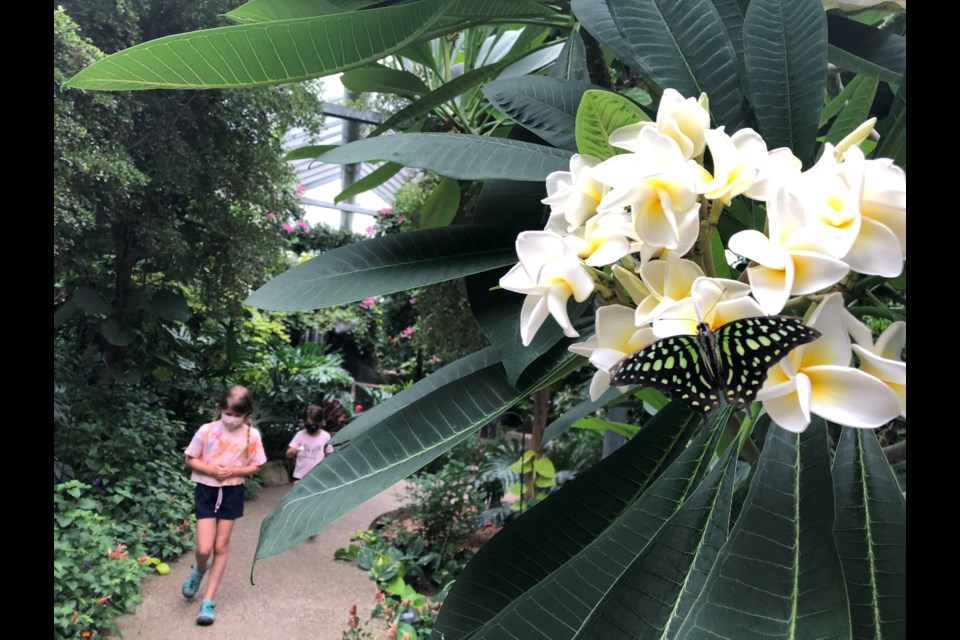In the months since the Cambridge Butterfly Conservatory was ordered to shut its doors, several generations of butterflies emerged from their cocoons and lived out their short two-week lifespan fluttering around the confines of their tropical garden home.
Sadly, it happened out of view of the thousands of visitors who come to the conservatory every year to witness the colourful display of insects, birds and flowers.
When the pandemic hit, many museums and art galleries across the province turned the lights off and walked away, leaving their collections and exhibits behind.
But it's been a different story at living exhibits like the conservatory where teams of horticulturalists, insect caregivers and maintenance staff worked steadily throughout the shutdowns to keep the attraction's thousands of creatures and plants thriving.
"In an environment like this, you can't just shut it down," says executive director and curator Adrienne Brewster.
The creatures and plants in the conservatory still have to be cared for, she says. "There's still just as much expectation."
Since the start of the pandemic, the conservatory has been closed a total of nine months.
So far this year, they've only been allowed to open for seven weeks.
Lost revenue from ticket sales may have added up quickly, particularly during normally busy seasons like Christmas, March Break and summer, but the conservatory was able to keep all of its 35 full and part-time staff employed, Brewster says.
The other worry brought on by the pandemic was maintaining the supply of butterflies and other insects regularly flown in from farms in Costa Rica and the Philippines.
“There were considerable concerns about transporting them by air during flight shutdowns,” Brewster says while showing off a new batch of cocoons that were expected to hatch this weekend for visitors to witness.
When the province announced its reopening plan in June, leaving indoor attractions closed until Step 3, the first projection for reopening was July 29, which meant the conservatory would miss more than half its summer season of revenue.
"That was devastating for us," Brewster said, adding the distinction didn't make much sense when compared to allowances in the province's reopening plan for non-essential retail.
It "was just a huge oversight," Brewster says, adding their stringent safety measures made them just as safe and "visitor ready for Step 1 and Step 2."
Brewster is referring to physical distancing, 50 per cent capacity limit, mask requirement, hand sanitizing stations and directional arrows that encourage a one-way flow of traffic through the garden space.
"It feels like normal prep for summer," Brewster said Thursday as staff arrived for training in advance of Friday's opening day.
"We're so excited to be open."
New insects added to the insectarium include domino cockroaches, tarantulas, hissing cockroaches and Malaysian jungle nymphs among other large stick insects.
Special events and programming is on hold for the foreseeable future as the conservatory gets back to the business of welcoming visitors.
With so much uncertainty still in the air, staff are focused on developing some “exciting new exhibits” for next spring and summer.
“Until last week, no one even knew what Step 3 was going to look like,” Brewster says.
Despite the uncertainty, response to the reopening has been “pretty overwhelming,” she says.
Tickets made available last week in online pre-orders sold out quickly for Friday and Saturday with the expectation all of Sunday's timed entries would sell out as well.
The anticipated reopening the U.S.-Canada border will bring extra ticket sales next month, and Brewster says local tourism from Ontario residents is expected to be strong for the remainder of the year.
“It’s lovely to think people want to be the first inside,” Brewster says.



